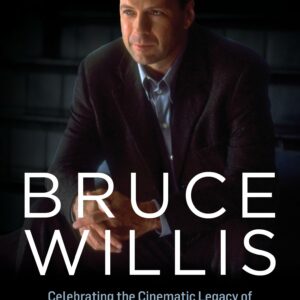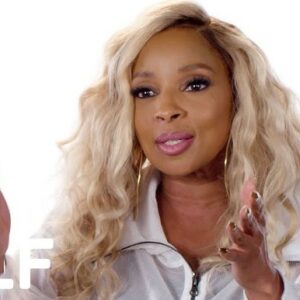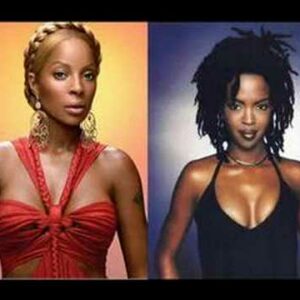Aretha Franklin’s contributions to music are undeniable, but what often gets overlooked is the significant role fashion played in her journey as an artist, activist, and woman. The Queen of Soul didn’t just wear clothes; she used them as tools for empowerment, protection, and self-expression, especially in an industry—and a world—dominated by men. Her wardrobe choices were deliberate, often acting as an extension of her personality and a shield against the pressures she faced as a Black woman navigating both the music business and societal expectations.
In a male-dominated industry, Franklin’s choice of bold, unapologetic fashion was her armor. This wasn’t simply about looking good—this was about commanding respect, protecting herself from judgment, and asserting her power in rooms where her voice was often drowned out by patriarchal norms. Her clothing became a symbol of her identity, her strength, and her refusal to be confined by the expectations placed upon her as a woman, especially a Black woman, in America.
Clothing as Armor: Protecting the Queen
In the male-dominated world of 1960s and 70s music, Aretha Franklin stood tall—literally and figuratively. At a time when women, particularly Black women, were often marginalized, Franklin used fashion not just to enhance her appearance but as a form of silent rebellion. Every gown, fur coat, or feathered hat she donned was a statement of defiance, a way to armor herself against the relentless scrutiny of an industry that often reduced female artists to mere spectacles.
Franklin’s style was about self-protection. She was aware of the criticism that could come her way for being too outspoken, too powerful, or even too successful. Her fashion choices—whether it was a dazzling gown on stage or an elegant but demure ensemble off it—provided her with the protection she needed to navigate these treacherous waters. In many ways, her bold fashion was a shield, not just from the industry’s judgments but also from societal pressures that sought to box her into limiting stereotypes. She wore clothing that told the world, “You cannot touch me.”
The more dominant her voice became in the cultural landscape, the bolder her style grew. When Aretha draped herself in luxurious fabrics and elaborate accessories, she was, in essence, creating a visual barrier, a line in the sand that said, “I am here, and I will not be overlooked or diminished.” And it worked. Those bold choices shielded her from the attempts to minimize her contributions, both as an artist and as an activist. She became a larger-than-life figure, one whose presence was undeniable.
Occupying Space: Demanding Attention
Aretha Franklin didn’t just command attention with her voice—her fashion demanded it as well. Clothing became her method of occupying space in rooms where she might have otherwise been marginalized. As a Black woman performing in predominantly white spaces or male-dominated industries, Franklin’s fashion was a subtle but powerful protest. It ensured that her presence was felt and could not be ignored.
When Franklin walked into a room or stepped onto a stage, she did so with a commanding presence, amplified by the outfits she chose. Her bold color choices, her luxurious furs, and her elaborate stage gowns were as much a part of her performance as the music itself. They demanded attention, forcing people to reckon with her presence, her talent, and, ultimately, her power. In a world that often sought to diminish her or make her invisible, Franklin made sure she was seen.
Her fashion choices were not just about aesthetics but about identity and empowerment. They were a way for her to assert her right to be there, to take up space, and to be heard. Whether it was a form-fitting gown that accentuated her curves or a voluminous fur coat that added to her already imposing stature, Franklin’s clothing choices sent a clear message: “I belong here.”
Fashion as Voice: More Than Just Music
While Aretha Franklin is most remembered for her powerful voice, her clothing choices were another crucial form of self-expression. Fashion became a secondary language for Franklin, one that spoke volumes about her confidence, strength, and resilience. Whether she was performing on stage or attending a public event, her outfits were chosen with care, each one contributing to the narrative she was crafting about who she was as a person and an artist.
Franklin understood the power of image, and she wielded that power expertly. Her gowns were often glamorous, dripping with sequins and intricate details, mirroring the richness of her voice and the depth of her talent. Yet she also knew how to dial it back, opting for more understated, elegant pieces when the situation called for it. This versatility in her wardrobe choices was a reflection of her multifaceted identity. She could be bold and brash, or she could be soft and vulnerable, depending on what the moment required.
Her fashion wasn’t just about looking good—it was about communicating her values and beliefs. When she wore African-inspired prints and hairstyles, she was making a statement about her connection to her heritage and her support for the civil rights movement. When she donned elaborate gowns and sparkling jewels, she was asserting her place as a queen, not just in music, but in culture and society.
In this way, Franklin’s fashion choices were an extension of her activism. Just as she used her voice to fight for civil rights and Black empowerment, she used her wardrobe to make statements about her identity and her place in the world. Her fashion became a tool for expressing not just who she was, but also what she stood for.
Cultural and Social Impact of Her Fashion
Aretha Franklin’s fashion choices were not made in a vacuum. They were deeply connected to the cultural and social movements of the time, particularly the Black empowerment and civil rights movements. As a prominent figure in both the music industry and the fight for racial equality, Franklin understood the importance of visual symbolism. Her clothing choices often reflected the broader cultural shifts taking place in the 1960s and 70s.
For example, during the height of the civil rights movement, Franklin often wore African-inspired garments, head wraps, and natural hairstyles. These choices were not just about style—they were a political statement. In a time when Black people were fighting for their rights and their place in society, Franklin’s embrace of African-inspired fashion was a way of reclaiming her heritage and asserting her identity as a proud Black woman. It was a way of saying, “I am not just a performer—I am a symbol of strength and resilience for my community.”
Franklin’s fashion also reflected her support for feminist ideals. As a woman in an industry that often treated women as disposable, Franklin used her wardrobe to assert her autonomy and independence. She wasn’t just dressing for the male gaze—she was dressing for herself. Her clothing choices were about empowerment, about reclaiming her body and her image in a world that often sought to control them.
A Legacy Beyond Music: The Queen’s Wardrobe
Aretha Franklin’s bold wardrobe decisions have become an integral part of her legacy, symbolizing her assertiveness and influence both in music and in society. Her clothing was more than just fabric and thread—it was a reflection of her inner strength, her values, and her unwavering belief in herself. Franklin’s fashion choices have inspired countless artists and activists, showing that clothing can be a powerful tool for self-expression, empowerment, and resistance.
Today, Aretha Franklin’s iconic looks are remembered as much as her music. Her glamorous gowns, her voluminous fur coats, and her bold accessories are all part of the lasting image of the Queen of Soul. These wardrobe choices have become symbols of her power, her influence, and her ability to navigate a male-dominated industry with grace and determination.
Franklin’s legacy is one of empowerment—not just through her music, but through her fashion. She used clothing as a way to protect herself, to assert her presence, and to express her values. Her fashion choices were a form of resistance, a way of saying, “I will not be silenced, I will not be overlooked, and I will not be diminished.”
In this way, Franklin’s legacy extends far beyond her music. She has left behind a blueprint for future generations of artists, showing them that they too can use fashion as a tool for empowerment and self-expression. Her influence can be seen in the bold fashion choices of contemporary artists like Beyoncé and Rihanna, who, like Franklin, use their wardrobes to make powerful statements about their identities and their place in the world.
Aretha Franklin was more than just a musician—she was a cultural icon, a symbol of strength and resilience, and a trailblazer who used every tool at her disposal, including fashion, to make her mark on the world.





